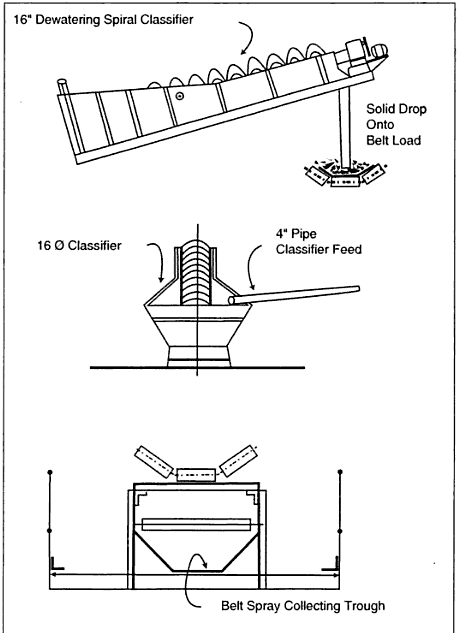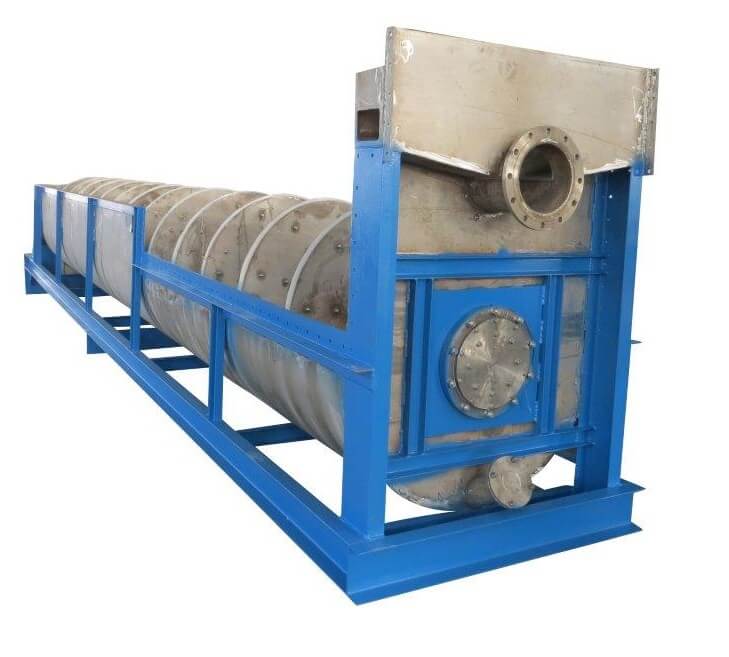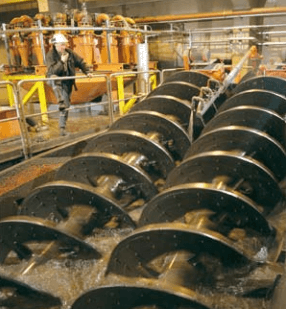 To be successful in a obtaining a uniform grind that is necessary to achieve a high percentage of recovery it is necessary to control the degree of fineness that the ore is reduced to. This is done by separating the fine material from the course and regrinding the coarse until it is fine enough for efficient mineral extraction.
To be successful in a obtaining a uniform grind that is necessary to achieve a high percentage of recovery it is necessary to control the degree of fineness that the ore is reduced to. This is done by separating the fine material from the course and regrinding the coarse until it is fine enough for efficient mineral extraction.
To be able to obtain the necessary control over the amount of grinding required, a method of effective classification and separation by size must be available. For maximum effectiveness it should take place after every stage of grinding.
The types of equipment that are used to accomplish this are called CLASSIFIERS. There are three basic kinds used. The first two, the RAKE classifier and the SPIRAL or screw classifier work on the same principal, and are not often used any more. These two types were popular for many years. It wasn’t until the development of the CYCLONE type classifier that their popularity faded. You may still find a few though, in the older mills and the mills that require a classification of the larger ore sizes that the cyclones are not very good at sizing.
Both the rake and spiral classifiers take advantage of the natural settling characteristics of ore. Any time that slurry is allowed to flow over a surface the tendency of the ore is to graduate itself into layers of different sized material. 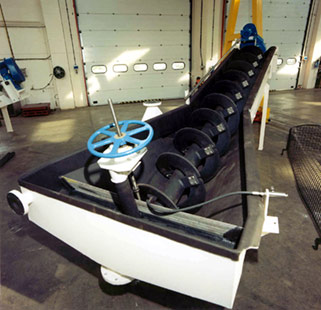 The larger sizes will be on the bottom, these are also the ones that are the slowest moving. As you come closer to the surface, the material will become smaller and faster until the very finest and the easiest to wash away is on top.
The larger sizes will be on the bottom, these are also the ones that are the slowest moving. As you come closer to the surface, the material will become smaller and faster until the very finest and the easiest to wash away is on top.
To understand how these two classifiers make use of this settling action, a description of them is required. First, to have the classification happen, the slurry must be able to flow. This means the classifiers must be inclined. The working portion of these two classifiers are the RAKES or SPIRAL/screw which are placed into the flow of ore. To separate the course material from the fine, the rakes and spiral make use of the same theory, but differ in its application. The theory is, as the slurry flows down the inclined bed of the classifier it will separate into different sizing. The larger ore that is on the bottom will not be flowing as fast as the light ore on top.
To separate the two, the rakes and the spiral will pull the all of the slurry back up the incline, then, let it go to flow back down towards the underflow or in this case the fine ore discharge point. The smaller, faster ore will be able to travel a longer distance than the large particles before the rakes or spiral will pull the ground material back towards the coarse ore discharge. If the Classifier is able to pull the course ore backwards further than it can travel forwards, then eventually the bigger particles will be pulled all the way to the top of the incline where they will be discharged. The smaller faster pieces of ground rock will end up at the bottom of the incline to be discharged as fine material that is ready for the next stage of processing.
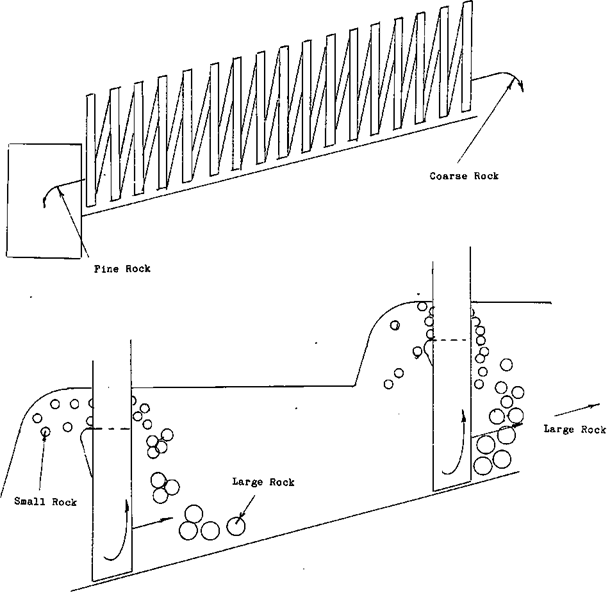
This type of classifier will do away with the necessity of pumps. The length of the incline that is needed is long and steep enough to have the material lifted to the feed end of the mill. The flow of the finer ore will run down hill to the next piece of equipment.
The concentrator that used this type of classification was built on the side of a hill to make use of gravity to get the material from one stage of production to the next. It was because of this that this type of concentrator was referred to as a GRAVITY FLOW/MILL. I used the past tense in this paragraph because this design of mill is no longer in use.
I said earlier that although these classifiers make use of the same theory their methods are different. With the rake classifier the difference is in a RECIPROCATING ARM.
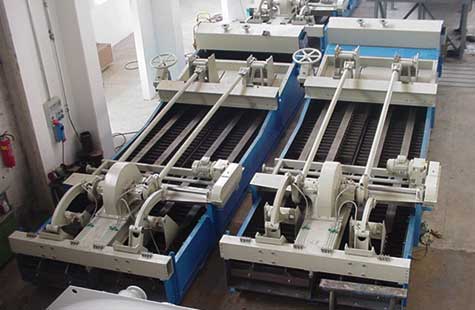 |
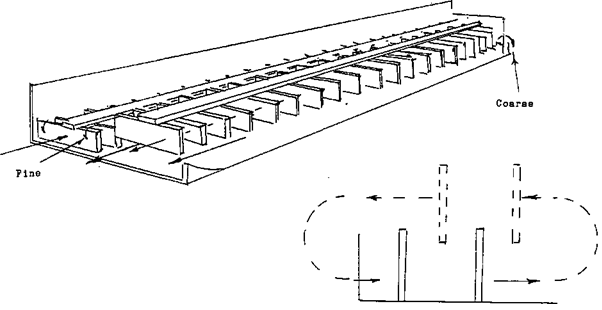 |
http://www.flsmidth.com/ and http://www.metso.com/
What is Optimum Screw – Spiral classifier % Solids in Overflow
I want to know what is the range of the % Solids content in overflow from screw/spiral classifier in Hematite Iron ore washing for efficient operation of classifier. I also want to know what is Auto dilution in thickener. Does Auto dilution has any effect on Pumping capacity of clarified water from thickener.
ANSWER
Each operation is different, but the good news is that you can simply determine the solids % wt. in the SOF, try 2 -3 times daily over one week, get a profile. If below 5% wt., you may not need auto dilution, also depending on ore and grind size. This is almost a clarifier regime, often workable without rakes in certain units. Above 5% in general start looking at auto-dilution before adding the flocculant – do this off-line. Make sure that the thickener underflow (TUF) discharge comes out continuously, otherwise you may need to play with the lifters, if you have them. The UF solids % wt. must be correlated with the yield stress….look for 30 Pa high-end cut off value for lean operation. When the ore or grind size changes, you need to repeat the evaluation.
My take on these classifiers is that the clear water added to the classifier feed determines the size of the largest heaviest particle going to the overflow. This is the criteria that you should be working to achieve. As you probably have more than one classifier reporting to the thickener you will need to perform the solids percent in each overflow. As you add water to the classifier feed, the separation efficiency increases. You should be raising or lowering the discharge weir to attain the desired size cut. Only if the thickener becomes overloaded should you add water. Pumping excess water adds cost and wear to pump trains.
Pulp density of the Overflow defines % of solids in thickener. This solids% depends also up on quality of recycle water used in spiral process…to know quantum of solids..you have to give feed quantity and underflow quantity.
The % solids in classifier overflow may vary in wide range, it’s all depends on your ore characterisation and operating variables. For the same operation we used to get 15-18% solids as my ore contains too much fines & this is not end process in our case. Try to concentrate on end products. Do not let go valuables in your final tailings.

